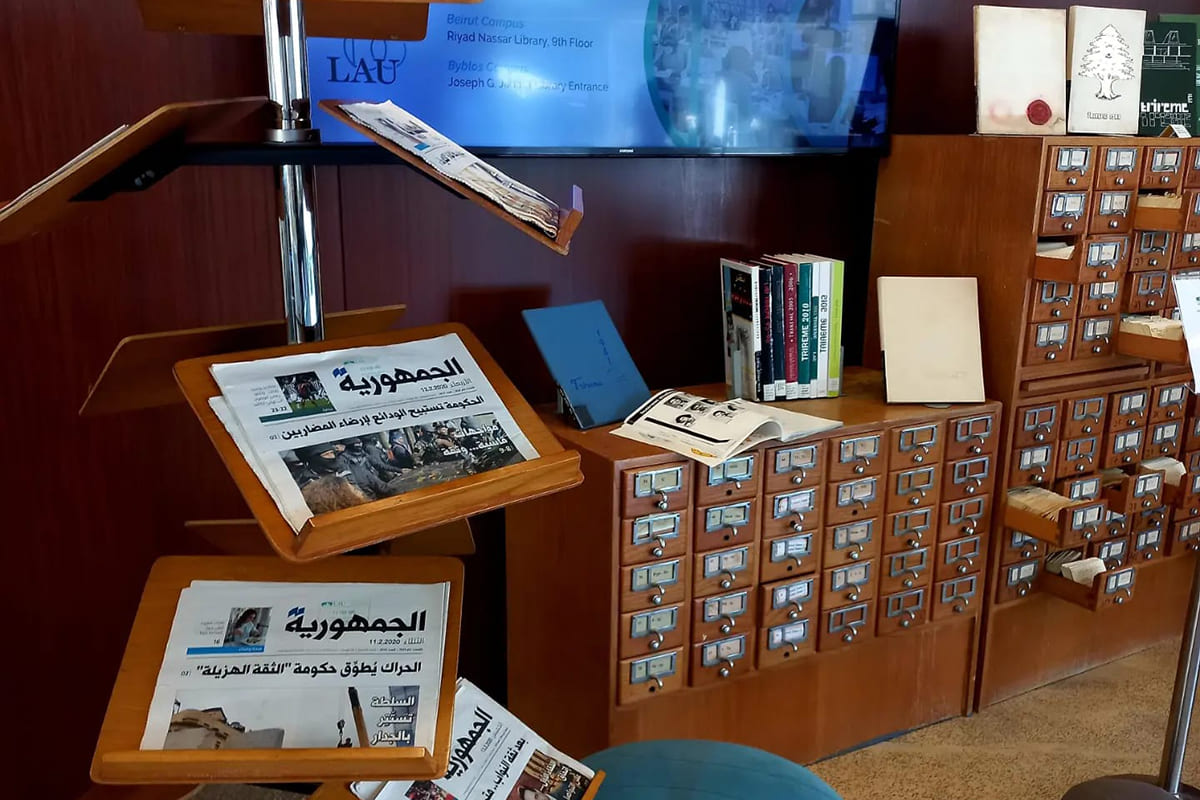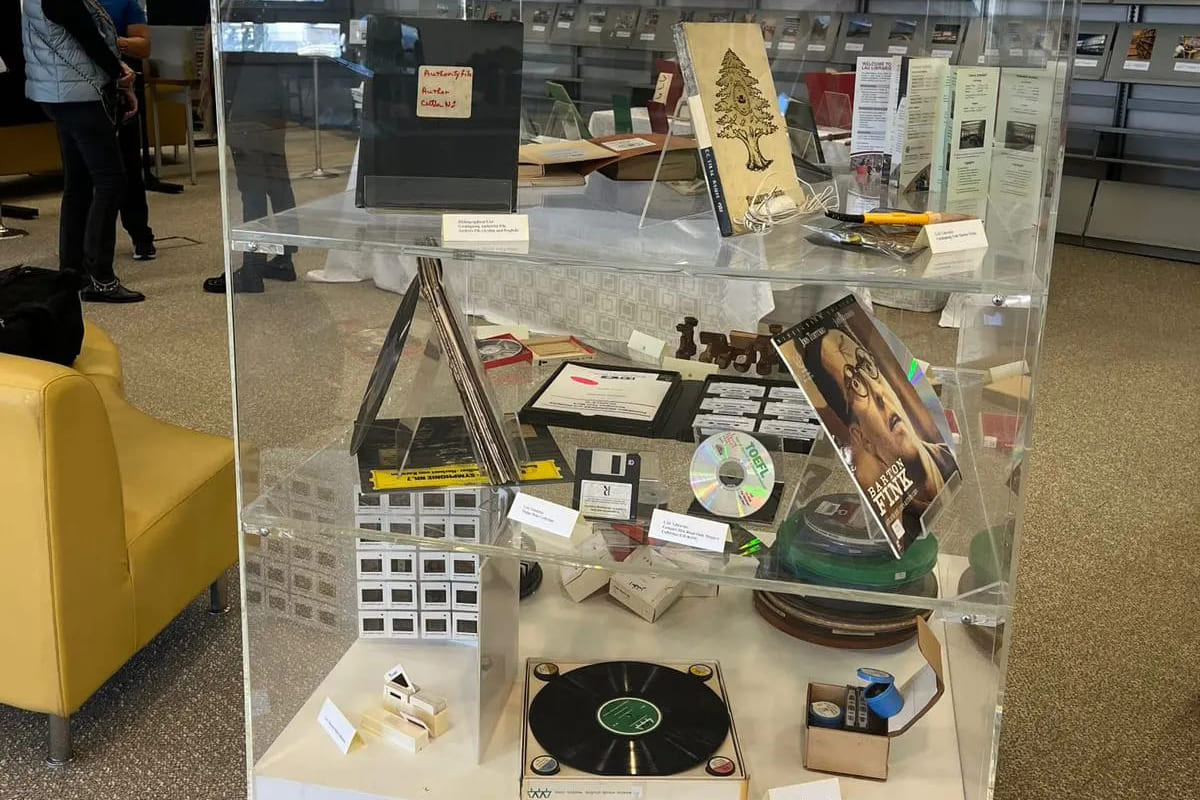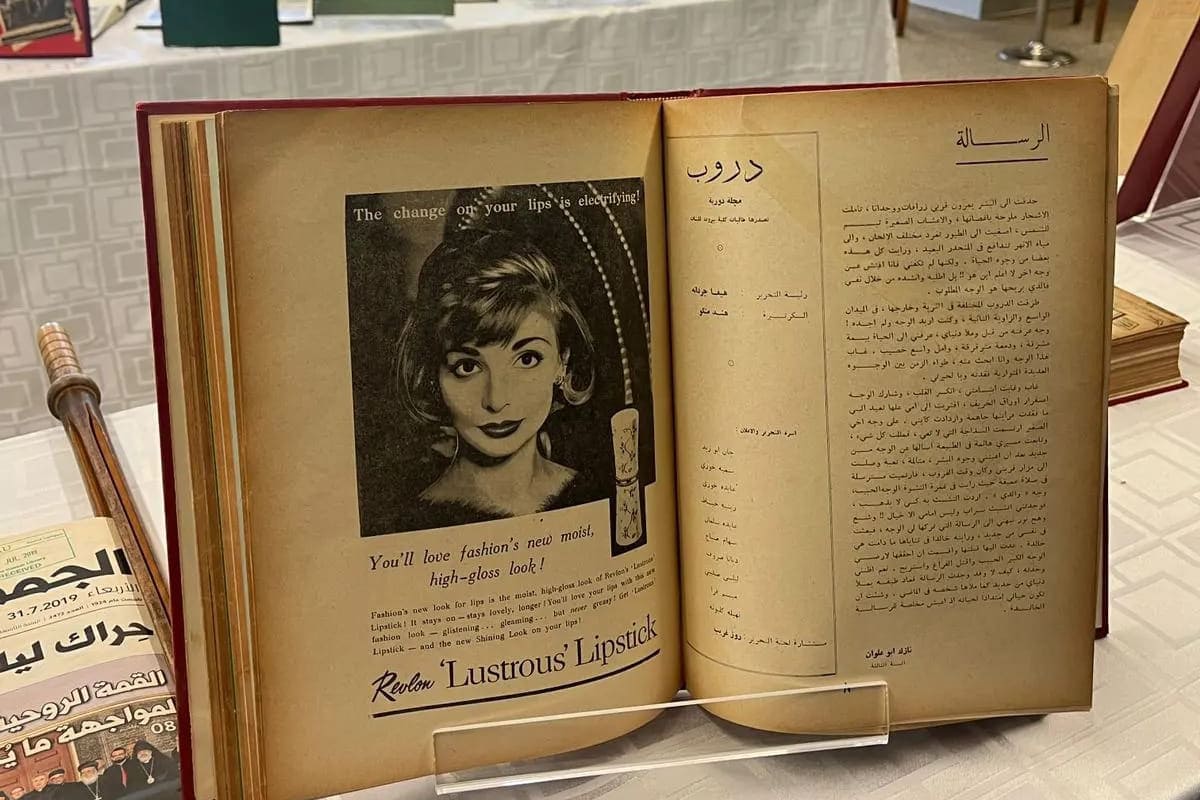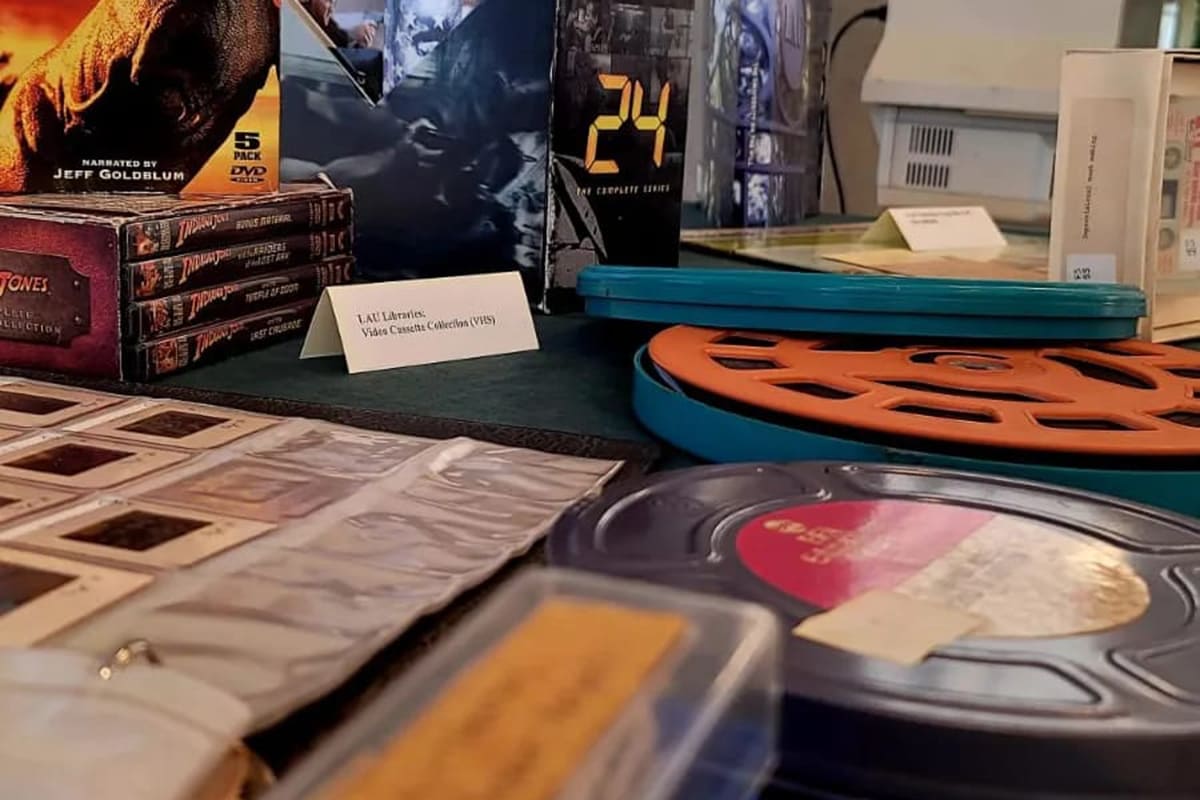The LAU Libraries: A Century of Cultural Heritage in the Making
The beating heart of LAU celebrates its 100 years of research culture, knowledge and history in a three-week exhibit at both campuses.
From its origins in 1934 as a single entity housed in Sage Hall, then known as the “Administration Building,” the LAU libraries have undergone a remarkable evolution over the past century.
What once served as a modest physical study space for the students at the American Junior College for Women has transformed into three digitally enhanced research, informational and archival hubs—the Riyad Nassar Library, the Joseph G. Jabbra Library, and the Health Sciences Library—spanning two campuses and transcending the limitations of traditional library spaces to cater to the needs of students, faculty, staff, alumni and the broader community.
To acknowledge and honor the pivotal role that these libraries continue to play in shaping LAU’s academic culture and legacy, a three-week exhibit titled Centennial Exhibition: 100 Years of Knowledge is being held at the Riyad Nassar Library on the Beirut campus and the Joseph G. Jabbra Library on the Byblos campus. The exhibition runs from March 12 to 28.
Featuring photographic timelines, yearbooks, old university publications, card catalog cabinets, and an array of audiovisual materials used to store information, such as vinyl, cassettes, microfilms, overhead projector slides and floppy discs, the exhibit traces the evolution of multimedia and resource access for visitors while paying tribute to the libraries’ leaders.
“We wanted to honor the role of the LAU libraries from their establishment to the present, focusing on their history, interiors, materials, and equipment that have evolved over the past 100 years,” said Antoinette Kattoura, senior library archives manager at the Riyad Nassar Library and chairperson of the exhibit’s organizing committee.
Dr. Jordan Ludders Srour, assistant provost for educational resources and innovation at LAU, remarked that it was “quite astounding that a small university in a country with such a tumultuous history would make it a priority to invest in and remain current with the best, state-of-the-art tools in library science.”
“The exhibit serves to highlight this investment, which is truly a gift to the community of scholars who benefit from searching and accessing its collection,” she added.
The LAU libraries house an extensive collection of research materials including around 400,000 print materials, 600,000 e-books, and 136,810 e-journals, and provide access to 180 online databases and 17,651 audio-visual materials. These comprehensive resources extend to the students the tools needed for academic excellence while offering faculty top-notch, up-to-date materials for their research.
Additionally, the libraries provide archiving and digitizing services to broaden the community’s access to historical records and resources and preserve valuable materials for future generations while facilitating easy retrieval and dissemination of information.
“As part of our other centennial project for this year,” explained Kattoura, “we are working on digitizing the university’s yearbook, Trireme, and a previous university magazine, Durub, published by BCW, which featured articles written by women, making them accessible to LAU’s community and the public.”



